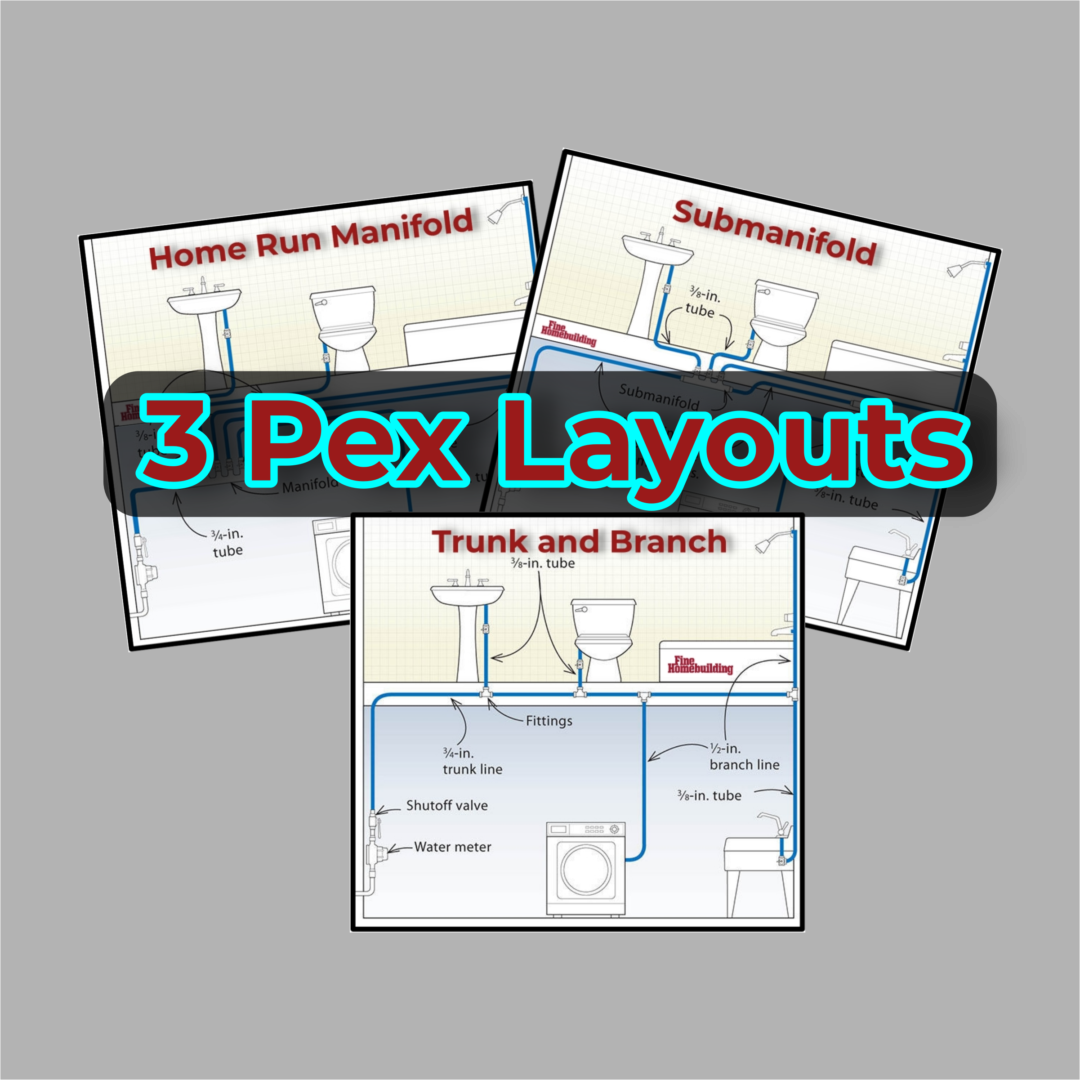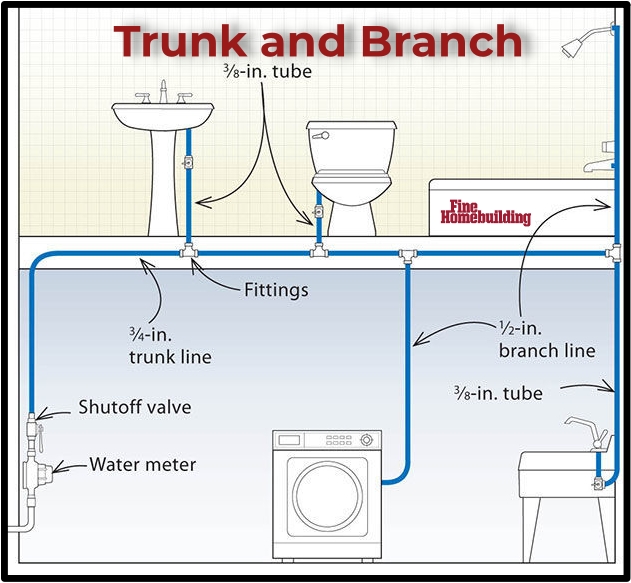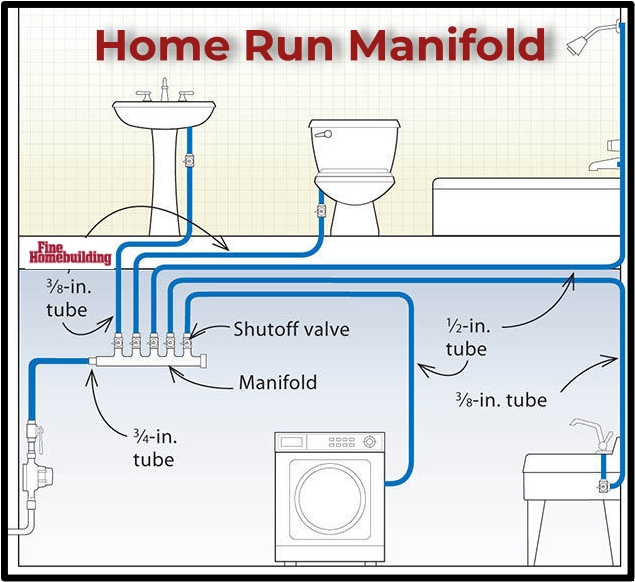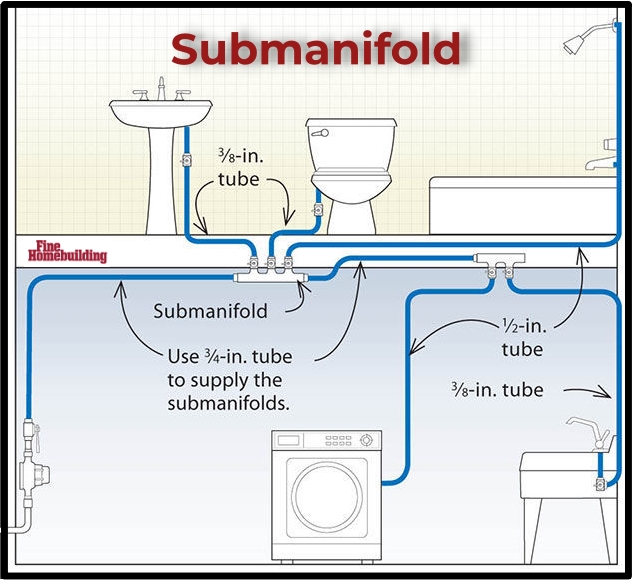
Estimated reading time: 3 minutes
Installing PEX Manifold
In general, manifolds should be installed in an accessible location very near the water heater. They should be accessible because one-half of the joints in the plumbing system is at the manifolds, and an accessible location improves the plumber’s efficiency. The hot water manifold should be as close as possible but not closer than 18″ from the water heater outlet. This will ensure the minimum time for hot water to arrive at a fixture. The cold water manifold may be located in any convenient location, but it is usually near the hot water manifold or the incoming water supply.
There are three design layout options for PEX plumbing systems:
- trunk-and-branch systems
- home-run manifold systems
- submanifold systems
Trunk and Branch

Designed to distribute water within a building, the trunk and branch system includes a main pipe that runs through the building, usually along the ceiling or in a chase. The pipe is a larger diameter than the service lines. Moving through the home, the trunk connects to individual lines and “branches off” to smaller pipe that connects to fixtures such as sinks, toilets, and showers.
One advantage of the trunk and branch design is that it allows for better control of water pressure and flow within the building. Using the main trunk pipe, the water can be distributed more evenly to the various fixtures rather than relying on a series of individual pipes with different pressure and flow rates. This can help prevent low water pressure or uneven flow at different fixtures.
Home Run Manifold

I see the home run manifold more often than any of the three systems. I like the manifold system because of the ability to turn off individual fixtures; hose bibbs can be quickly shut down in cold weather.
A large-diameter (3/4 in.) main water line feeds a special manifold; smaller lines run from the manifold to each fixture. Any fixture in the house can be shut off at the manifold. And because home-run systems don’t rely on a large pipe for distribution, you save water and energy. Simply put, you don’t have to leave the faucet running as long before hot water reaches the sink. This design flexibility has a cost, however. Because a dedicated line is going to each fixture, you use a lot of PEX and drill a lot of holes.
Submanifold

Submanifold systems may be installed in many configurations. This system requires less pip than a home-run system. Rather than one manifold, each bathroom, laundry, and kitchen gets its own separate submanifold. This system won’t save water over a trunk-and-branch system. Still, by adding other submanifold systems, you can configure water and energy savers by incorporating the main manifold and a recirculating pump.
I have not seen the submanifold installed here locally.
- - - - - - - - - - - - - - - - - - - - -